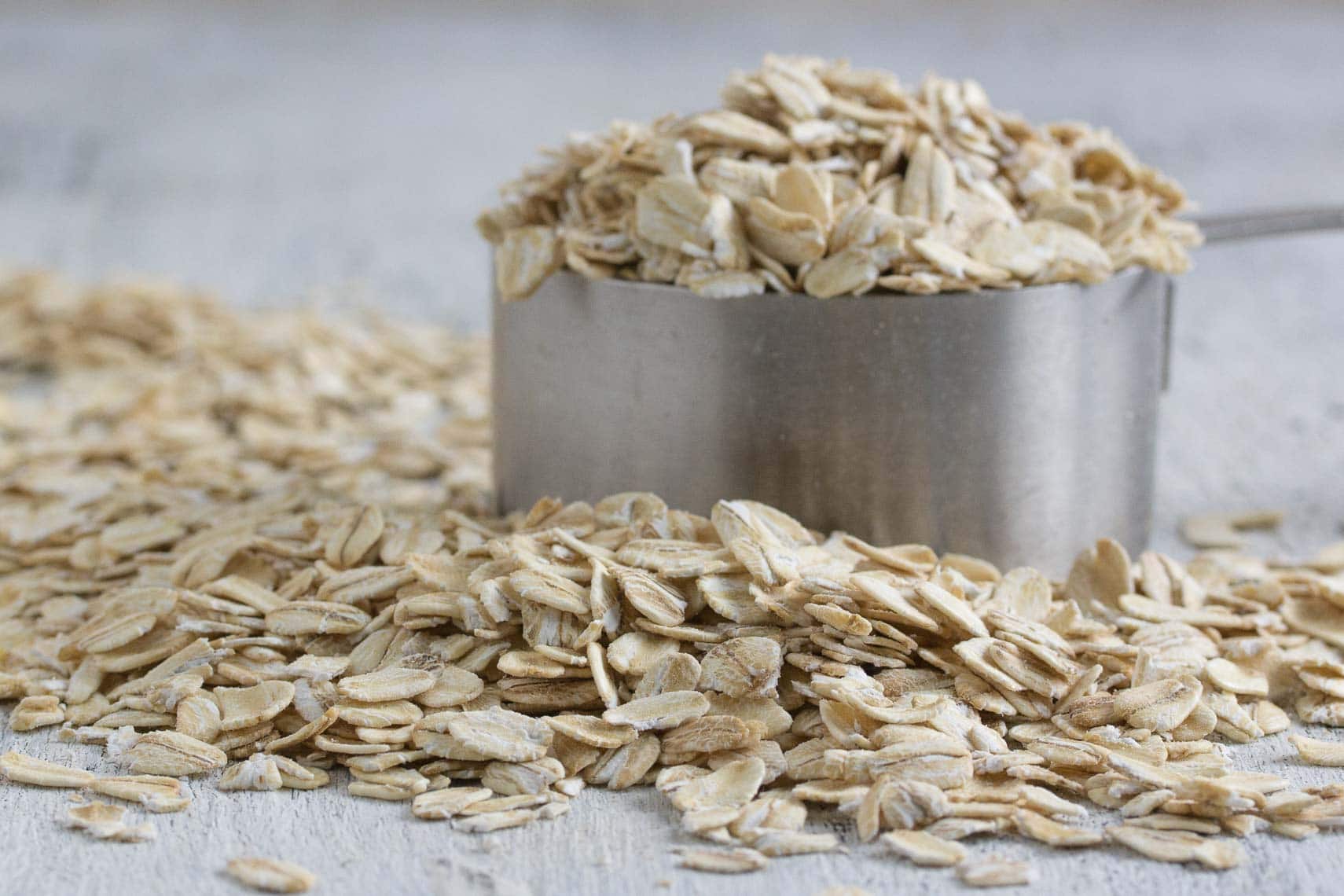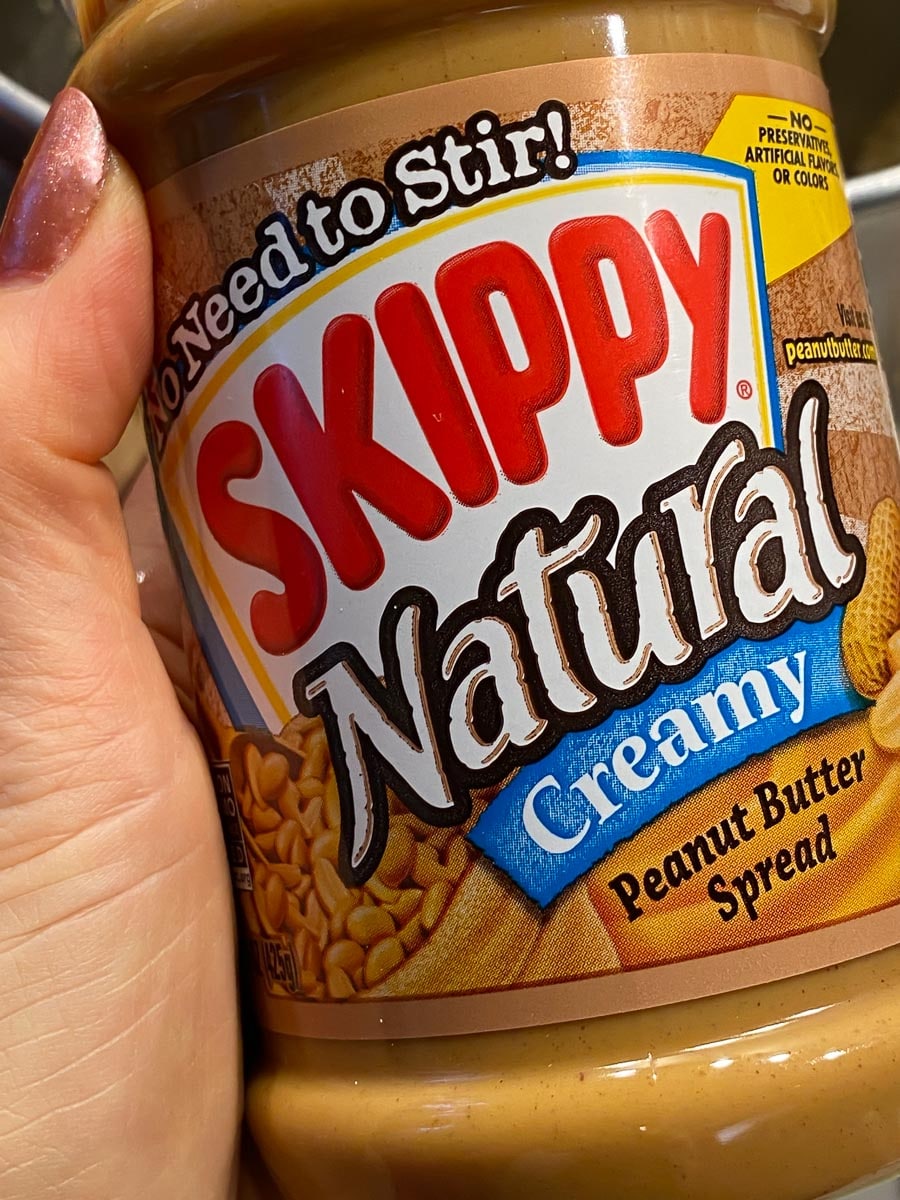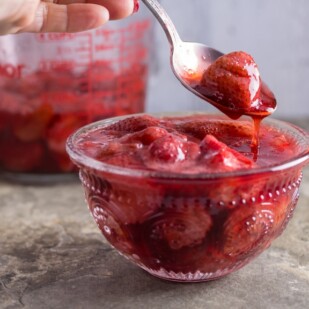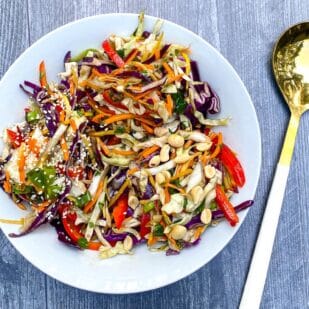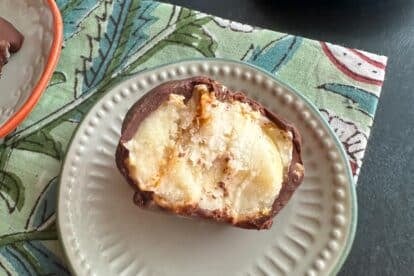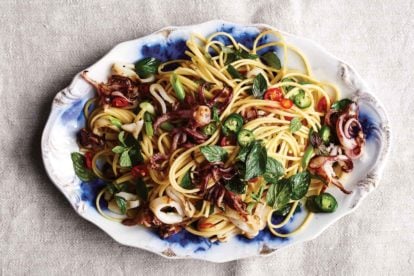If you love Girl Scout Do-Si-Do oatmeal cookies with their luscious peanut butter filling, we have a treat for you. Our Low FODMAP Girl Scout Do-Si-Do Copycat Recipe is low FODMAP, gluten-free and lactose-free! Get ready to bite into two chewy oatmeal cookies sandwiched around a creamy peanut butter filling. And since I think chocolate and peanut butter go together so well, I drizzled half my batch with semisweet chocolate.
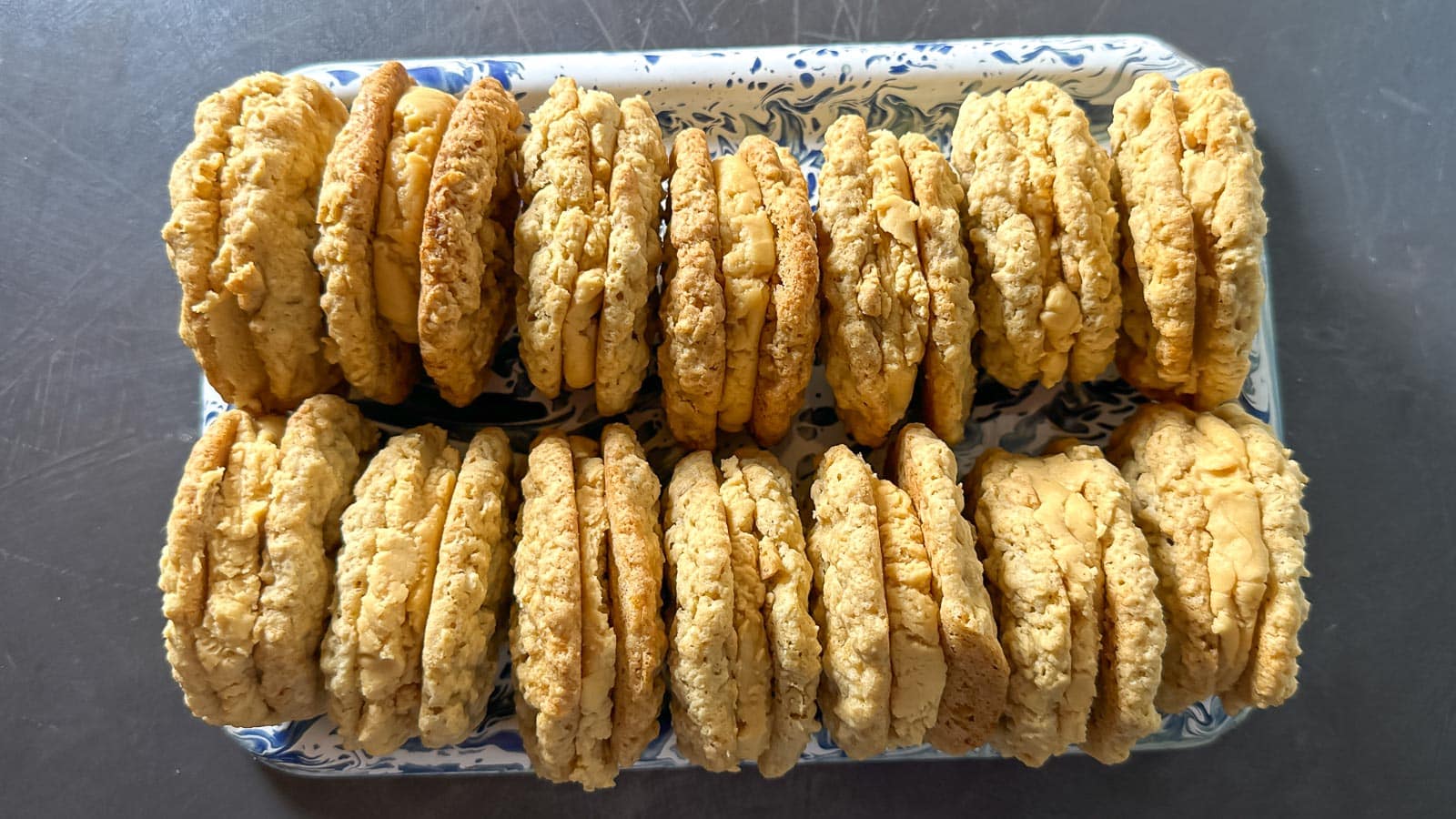
If you are a Girl Scout cookie lover, check out our Low FODMAP Thin Mints, too.
This recipe is based upon one from ihearteating, but this one is streamlined, gluten-free and lactose-free.
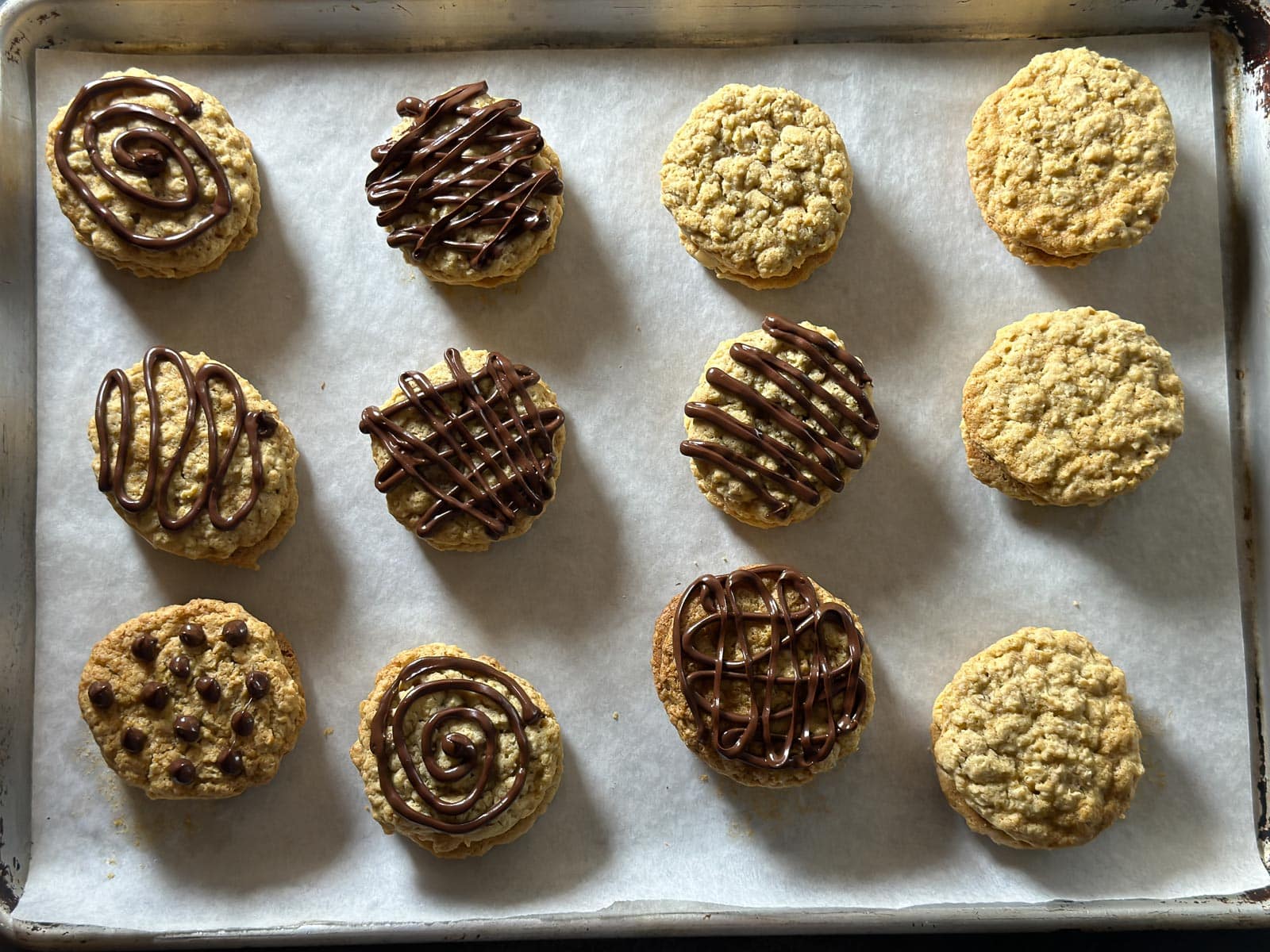
You can have oats while following the low FODMAP diet, even during the Elimination Phase.
Oats have been lab tested by both Monash University and FODMAP Friendly. Brands, such as Quaker Oats, have been lab tested, and several generic oat sources have been tested, as well. Oats have been lab tested for FODMAPs in various forms, such as the most common rolled oats (also called old-fashioned oats), as well as steel cut oats, quick oats, 1-minute oats, instant oats, and more.
Monash puts a low FODMAP serving of uncooked rolled oats at 65g, which are the type of oats used in this recipe.
Is Peanut Butter Low FODMAP? Yes, there are low FODMAP servings of peanut butter. Both Monash University and FODMAP Friendly have tested various peanut butters and our Explore an Ingredient: Peanut Butter article explores the relationship between peanut butter and FODMAPs in depth.
Monash shows two entries in their smartphone app. We do not know for sure what the images correspond to in terms of type or brand of peanut butter. One image shows a blue cap on the jar, which is iconic and would suggest the Skippy brand, however, it is the other listing that specifies the item is from the U.S. and that one shows a yellow cap, which is used for Peter Pan peanut butter. Monash will not confirm one way or another what brands were tested.
They state that both are low FODMAP at 2 Australian tablespoons, although one is said to be 50 g (the blue cap) and the other 32 g (USA derived and “looks” like Peter Pan).
Addendum: The app used to show that peanut butter became Moderate for fructose at 140 g. The current version of the app does not show this information. If you malabsorb fructose, it might be an issue.
When I am creating a recipe that focuses on peanut butter I actually think much more about texture and ingredients than flavor. Let me explain. While I can schmear any kind or brand of peanut butter on bread for a sandwich without much thought, when it comes to baking and cooking with peanut butter there is a lot more to think about.
A well-developed recipe will indicate what kind of peanut butter was used to create the recipe. For these Low FODMAP Girl Scout Do-Si-Do cookies you need no-stir style peanut butter. We use Skippy in the Test Kitchen.
There is so much confusion around “sugar” and the low FODMAP diet. We understand, though, because there are sugars that are high FODMAP. Luckily for us bakers, white sugar contains no FODMAPs whatsoever, and brown sugar is low FODMAP. You can read more in our Explore an Ingredient: Sugar article.
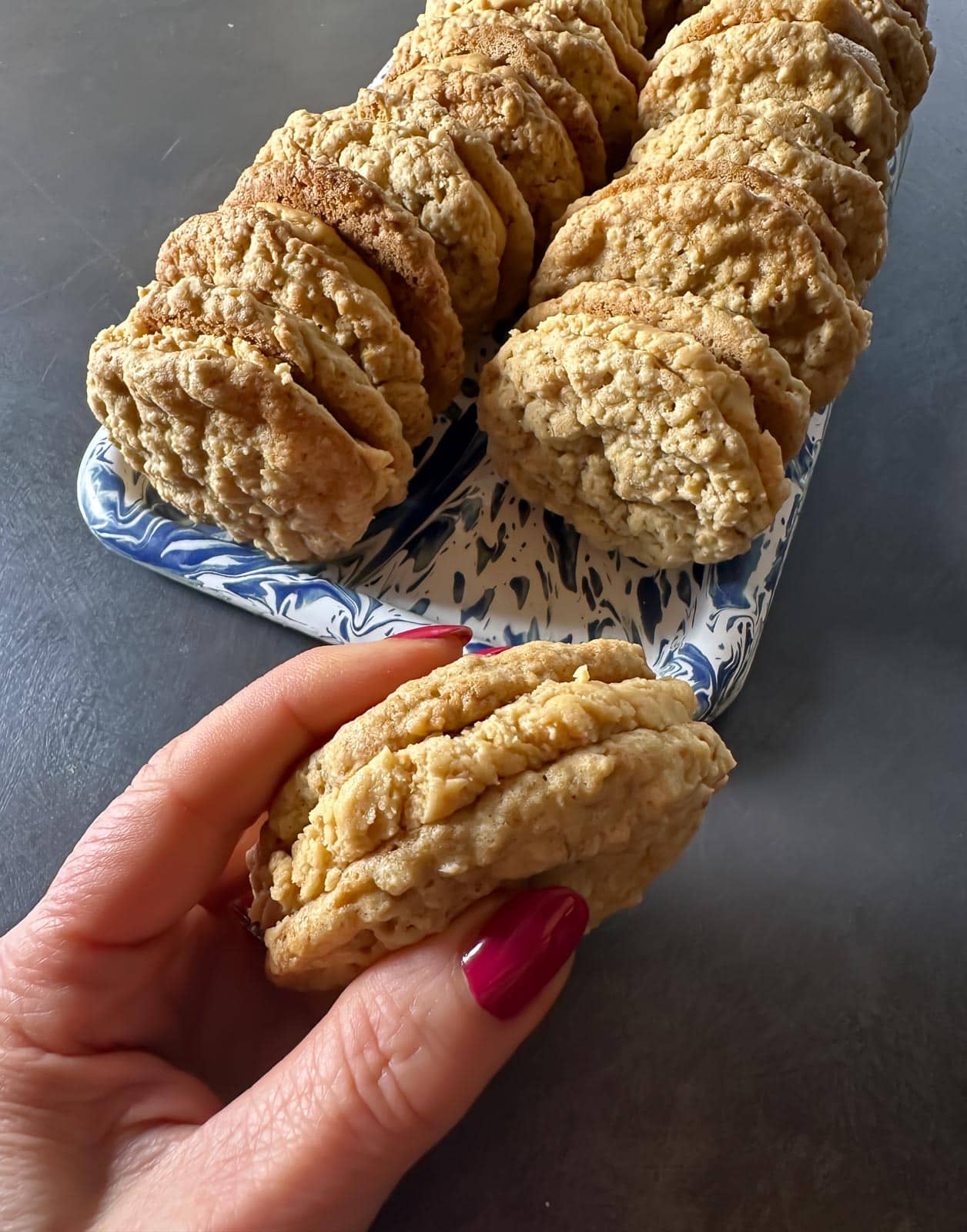
Making Low FODMAP Girl Scout Do-Si-Do Cookies
For the Cookies: Position racks in lower and upper third of oven. Preheat oven to 350° F (180°C). Line two half-sheet pans with parchment paper; set aside.
In the bowl of a stand mixer fitted with a paddle attachment, beat butter and sugars together until light and creamy.
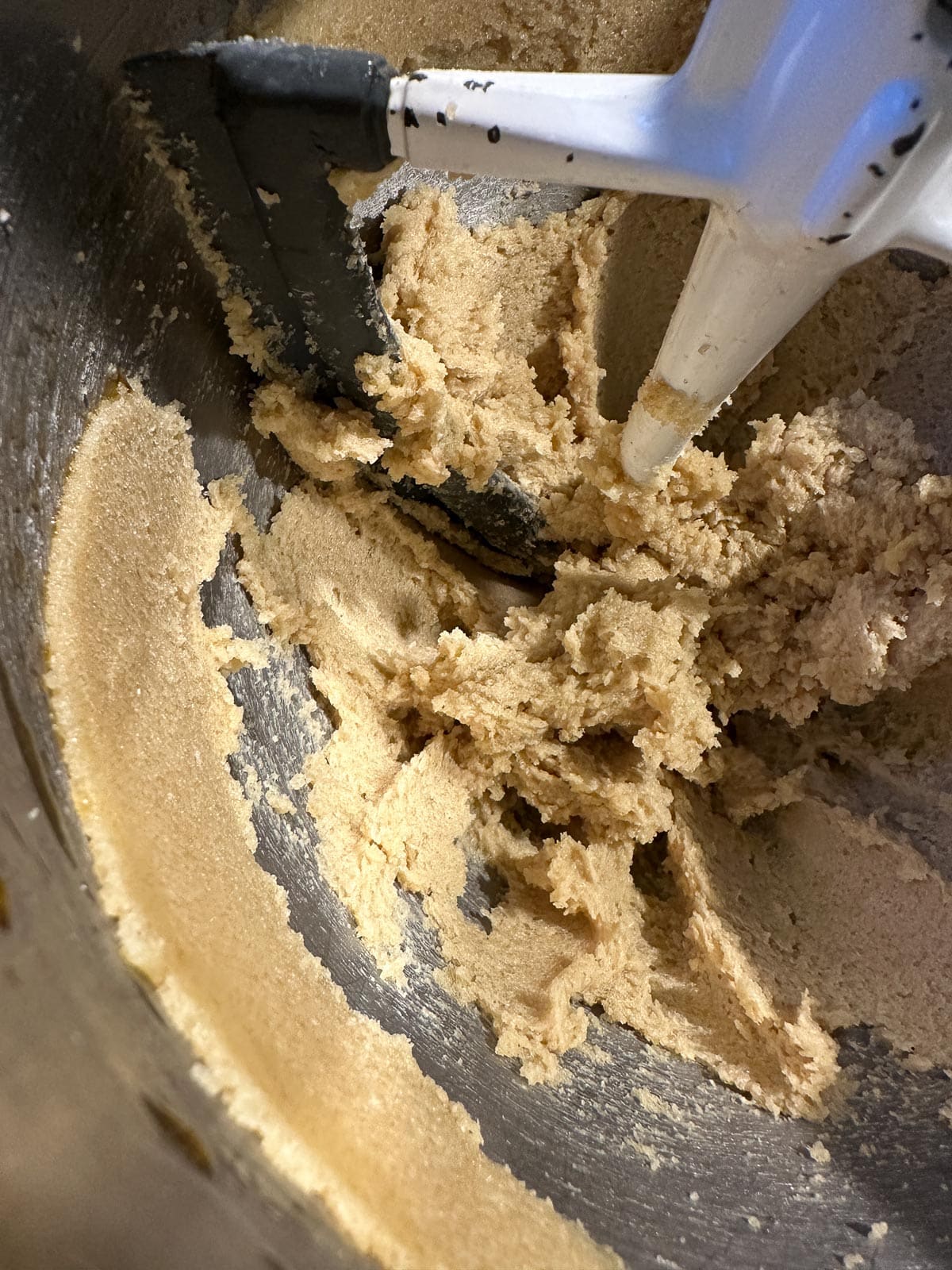
Beat in vanilla, then beat in the egg until well-combined.
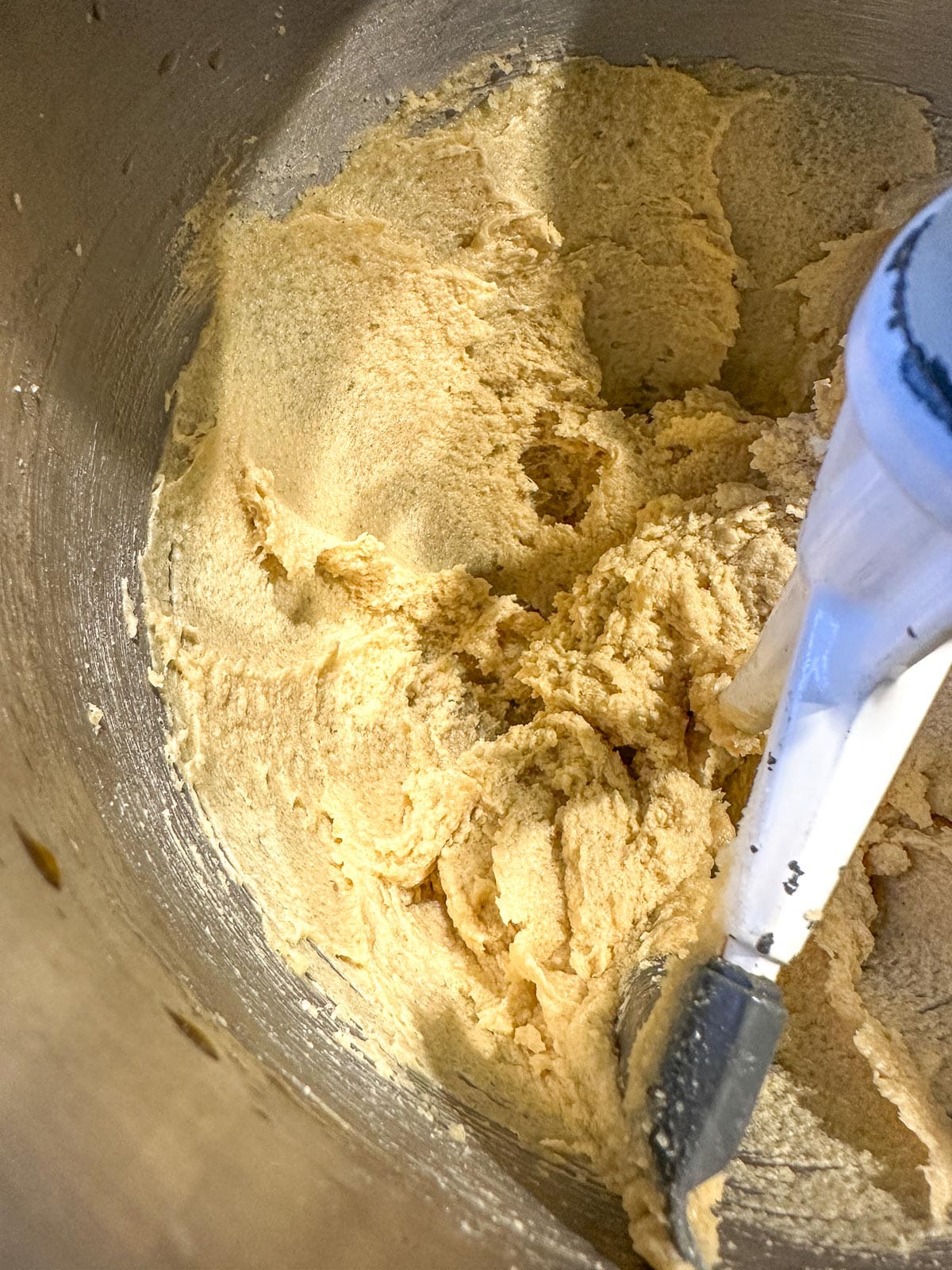
Next, on low speed, beat in the oats, flour, baking powder, baking soda, and salt just until mixture comes together.
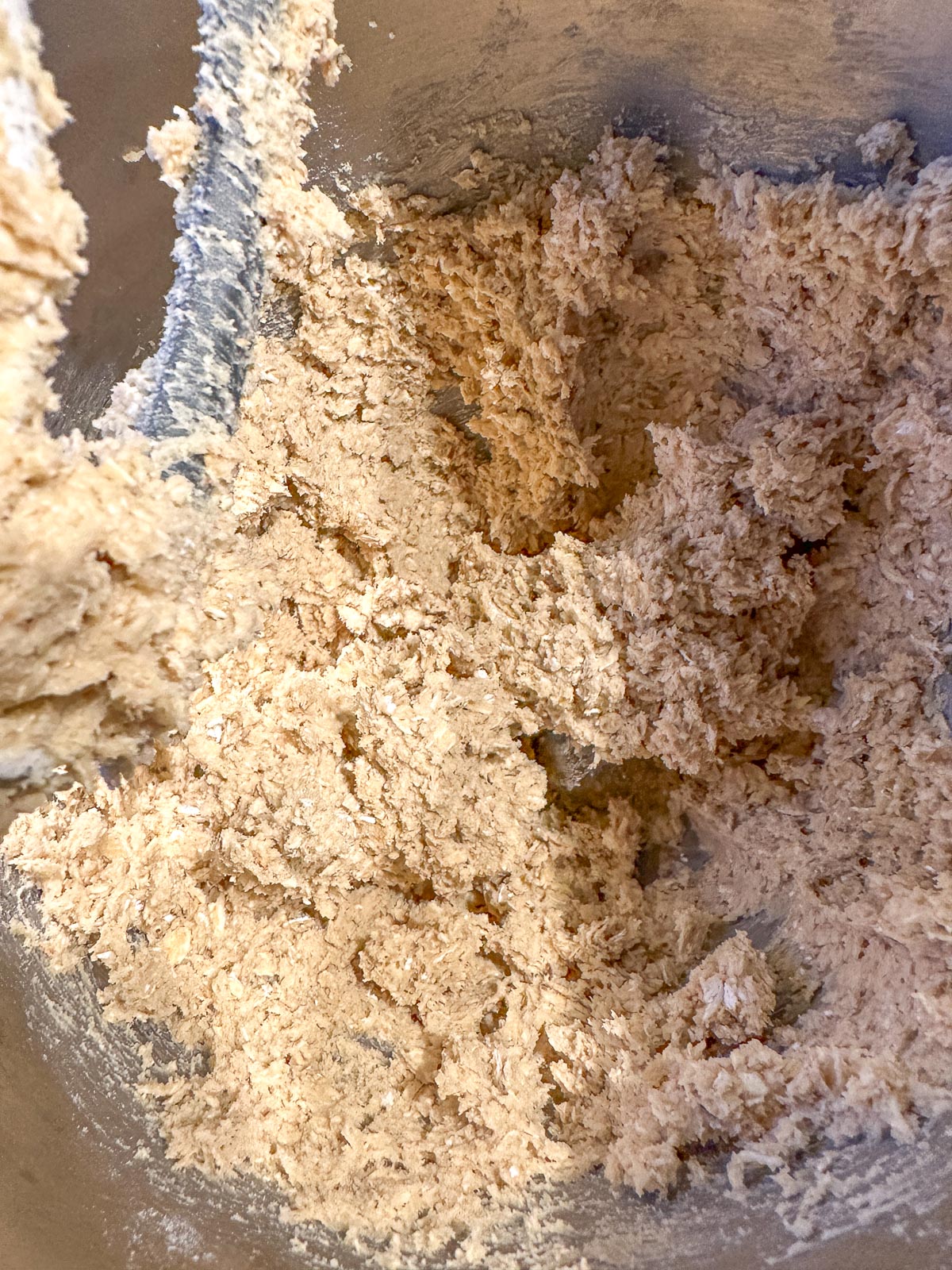
Drop cookies by large tablespoonfuls onto prepared pans, spacing dough about 2-inches (5 cm) apart. Using a scoop will help make the cookies nice and round.
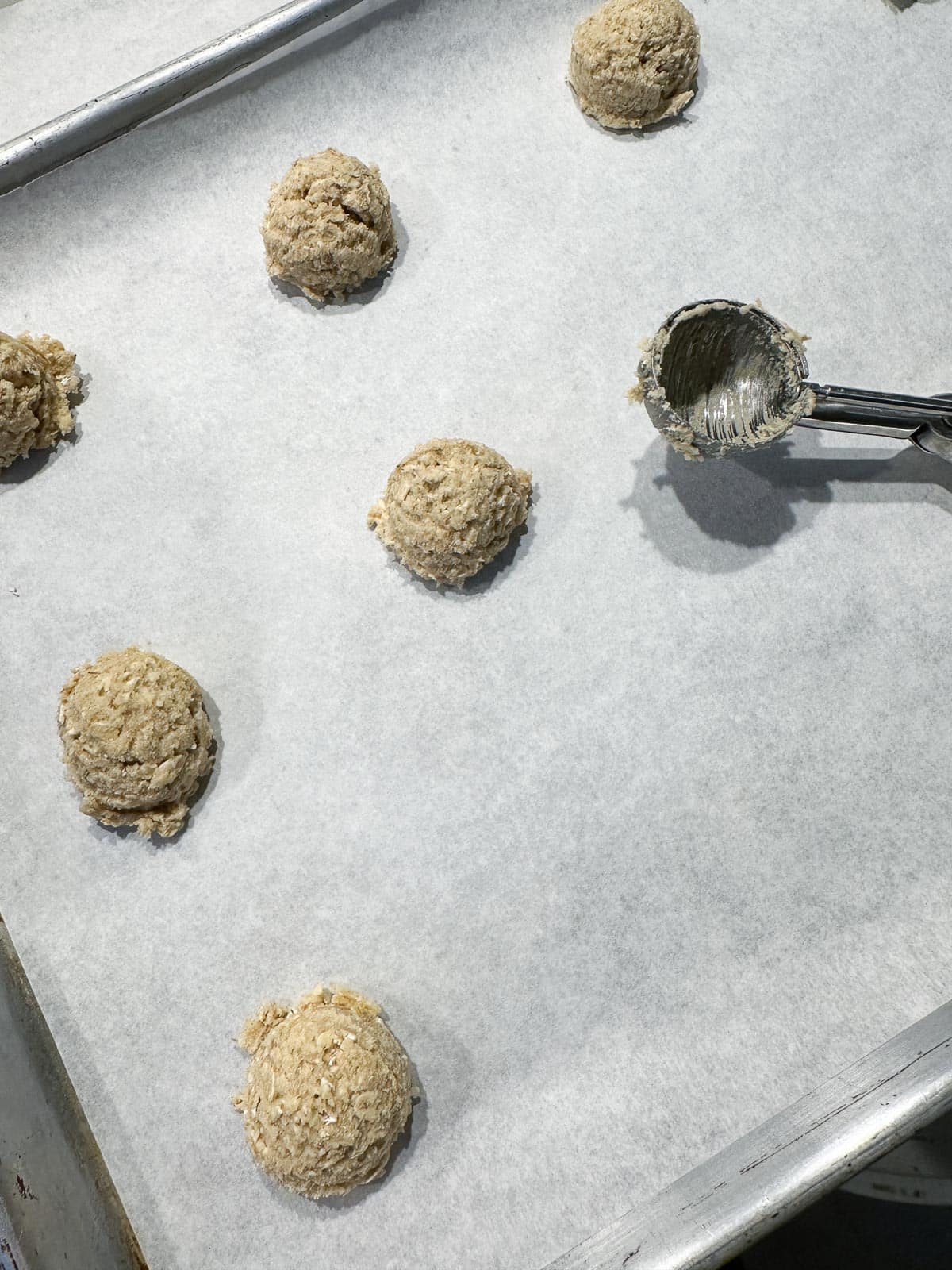
Bake cookies for about 10 to 12 minutes, rotating pans front to back, and upper to lower rack halfway through. Cookies should be firm and just beginning to turn golden around the edges, but still a tad soft in the center. Place pans on racks to cool cookies completely.
For the Filling & Assembly: In the bowl of a stand mixer fitted with a paddle attachment, beat peanut butter, butter, and confectioners’ sugar together until smooth and creamy. Beat in vanilla, then beat in enough milk or cream until the filling is spreadable, but thick enough to hold its shape.
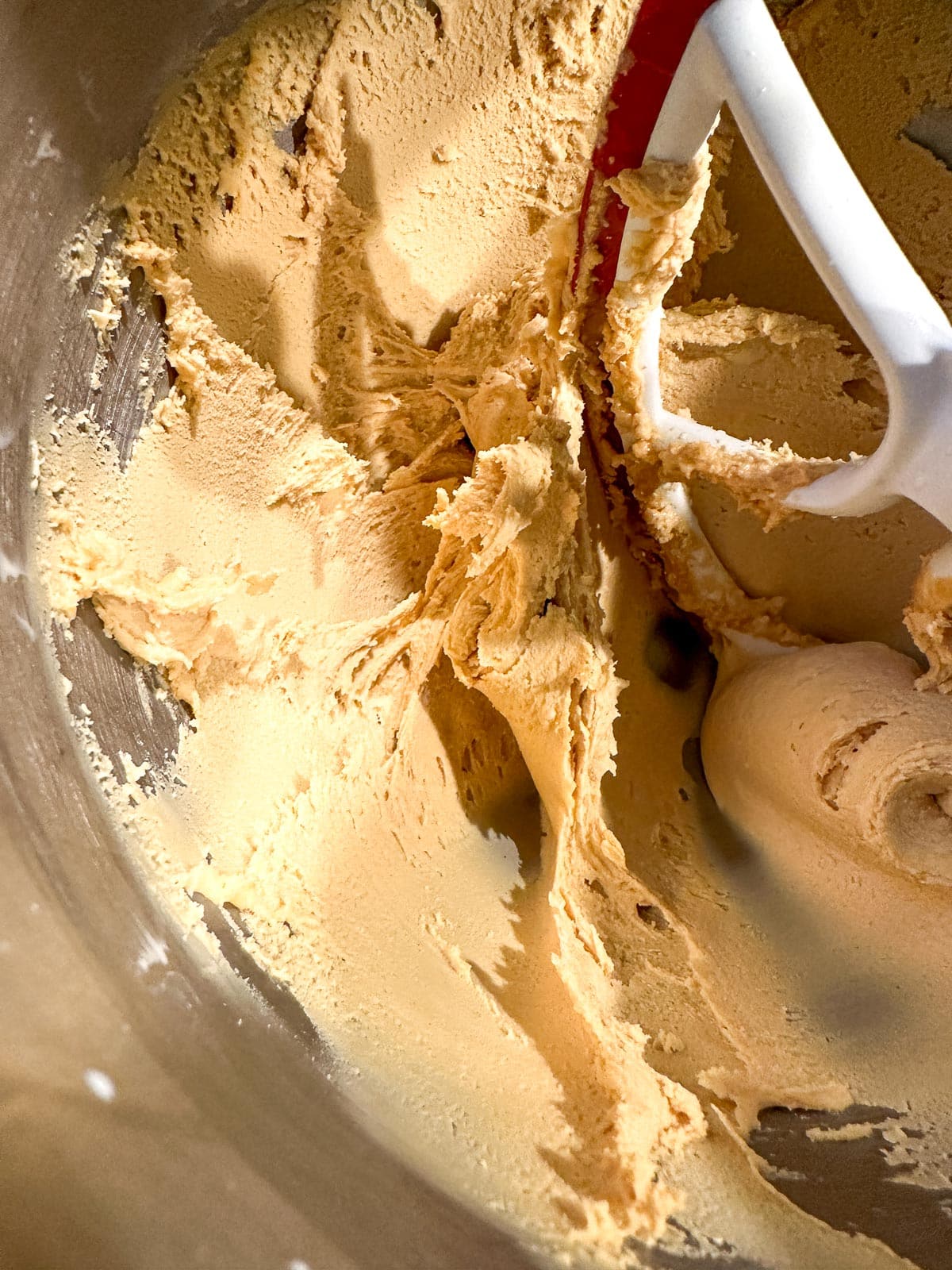
Spread filling on half of the cooled cookies and sandwich with the remaining cookies. If you want to drizzle chocolate on some of them, simply place melted chocolate in a parchment cone.
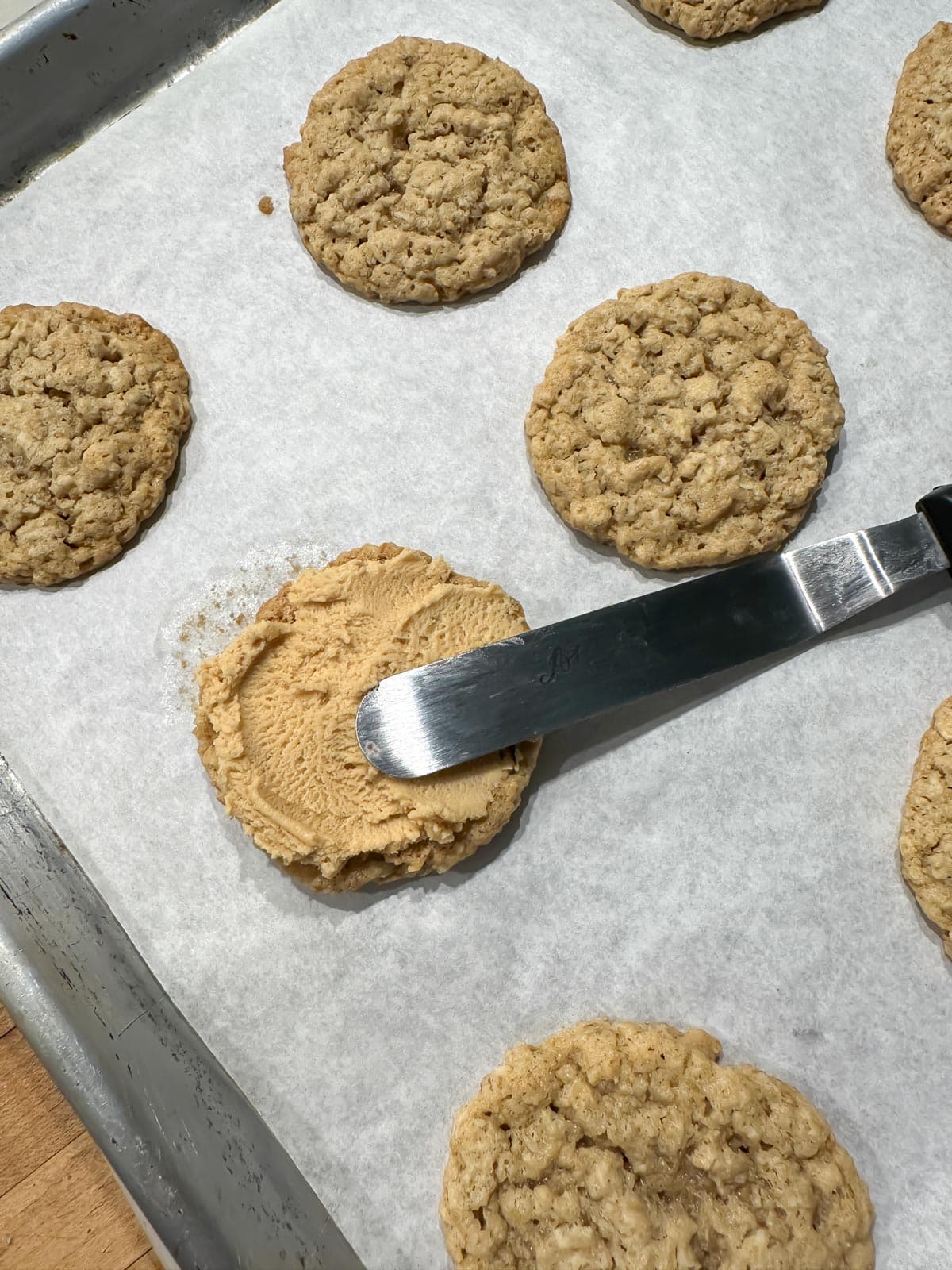
Place sandwiched cookies on one of your pans and drizzle any chocolate pattern you like. You could also just dip a fork in the melted chocolate and wave it back and forth. If you drizzle with chocolate, chill briefly until chocolate is set.
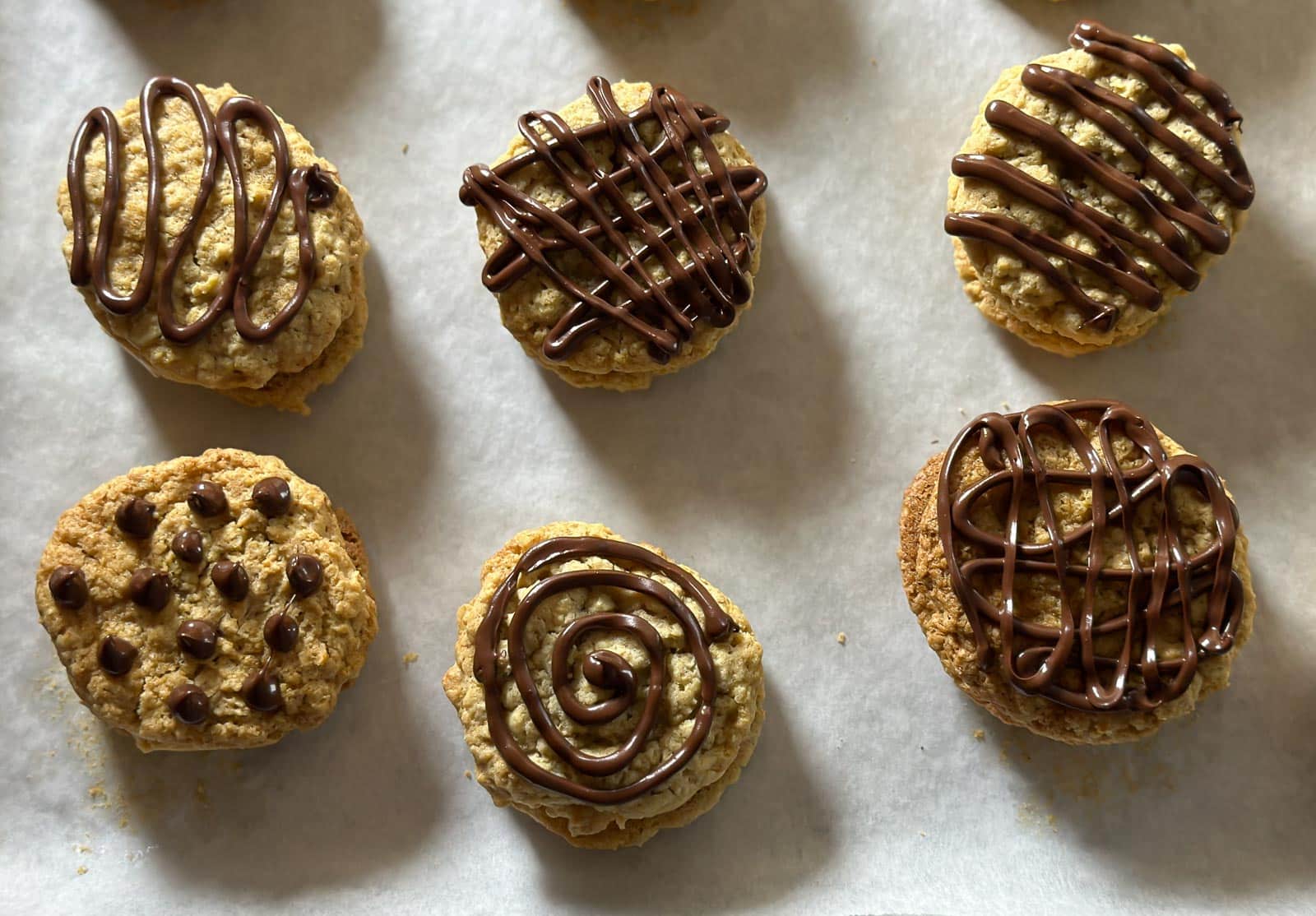
Cookies can be stored in an airtight container at room temperature for up to 4 days, but we like them best within the first 24-hours.
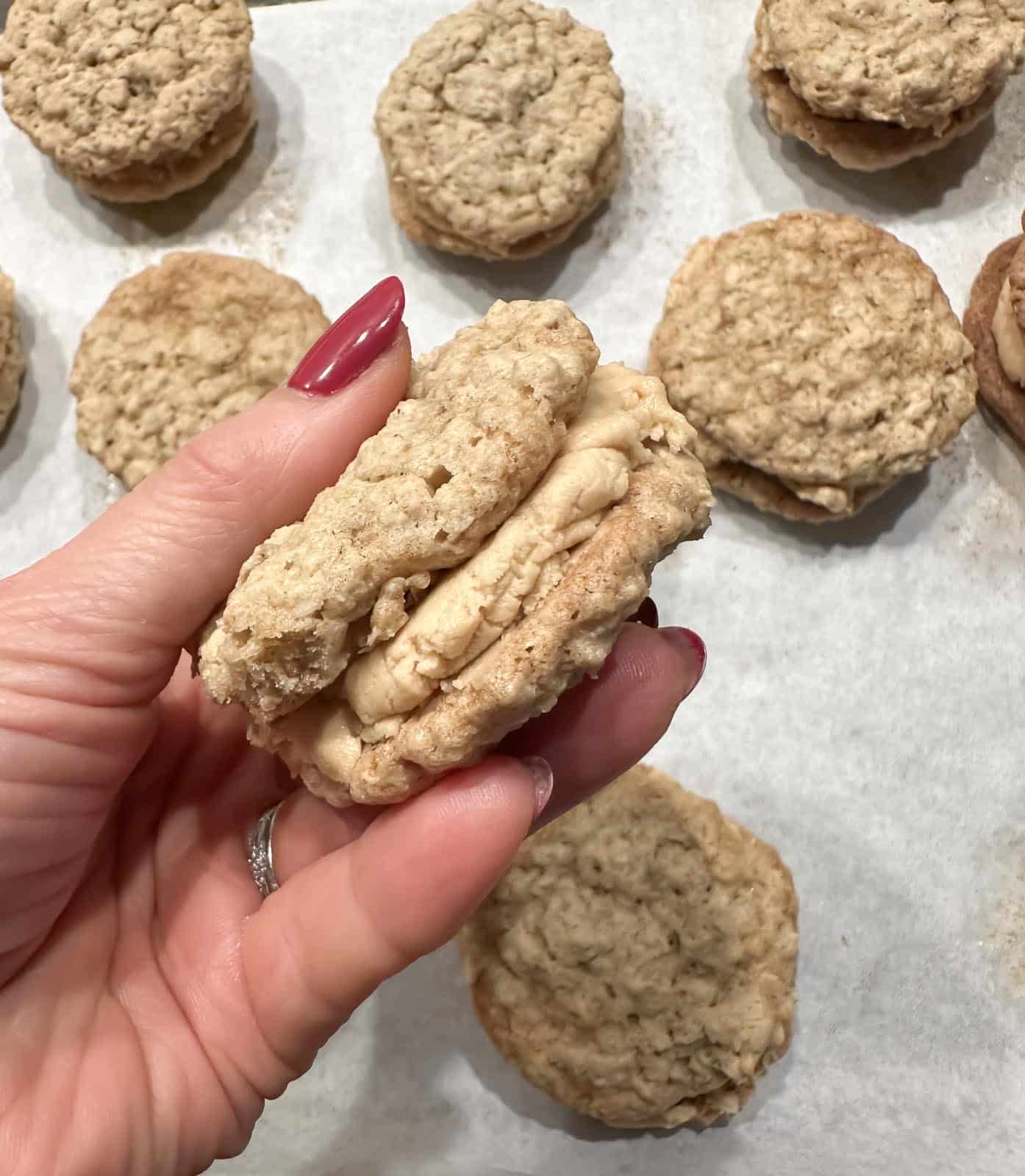
FODMAP Information
All recipes are based upon Monash University & FODMAP Friendly science at time of initial publication.
- Brown Sugar: Brown sugar has been lab tested by both Monash University and FODMAP Friendly. There are many kinds of brown sugar, from cane to beet (to blends) to Muscovado and more, which we discuss in our Explore An Ingredient: Sugar. Unfortunately, there is no information about what kind of brown sugars were lab tested. Monash gives us a low FODMAP amount of ¼ cup or 40 g but no further information. In addition, in private correspondence with Monash University we know that there are amounts larger than 40 g that would be considered low FODMAP. FODMAP Friendly gives us a low FODMAP amount of 13 g. Dark brown Muscovado sugar does appear in a product lab tested and certified low FODMAP by FODMAP Friendly, so we do know there is a low FODMAP amount.
- Butter: Both Monash University and FODMAP Friendly have lab tested butter. Monash states that a low FODMAP Green Light portion is 1 tablespoon or 19 g and also states that “butter is high in fat and does not contain carbohydrates (FODMAPs)”. FODMAP Friendly gives it a “Pass” at 1 tablespoon or 19 g. Both recommended serving sizes are presented as part of healthy eating guidelines, not as maximum FODMAP serving size. Fat can affect guy motility and trigger IBS symptoms in some people. Eat to your tolerance.
- Chocolate: Monash University has lab tested dark, milk and white chocolate all have low FODMAP amounts: 85% dark at 20 g; dark at 30 g; milk at 20 g; white at 25 g. FODMAP Friendly has also lab tested dark chocolate, milk and white chocolate. Their lab tests place low FODMAP servings for dark chocolate at 30 g, with a max low FODMAP serving size of 102 g (that contains dairy). Milk chocolate is 30 g with a 42 g max serve; white chocolate is also 30 g with a max low FODMAP serve of 42 g.
- Dairy: The low FODMAP diet is not a dairy-free diet. It is however, low in lactose. Many dairy ingredients are low in lactose, such as heavy cream and many cheeses.
- Eggs: Eggs are high in protein and do not contain carbohydrates, according to Monash University.
- Lactose-Free Dairy: Lactose-free dairy, such as lactose-free milk or lactose-free cream cheese, has lactase enzyme added that breaks the disaccharide molecules and creates a more digestible dairy product, from a lactose perspective. The resulting product is not dairy-free, but it is lactose-free. Some products might have miniscule amounts of lactose remaining, but the amount is small enough for the product to be labeled as lactose-free. For instance, Breyers Lactose-Free Vanilla Ice Cream states it is 99% lactose-free, while Lactaid Vanilla Ice Cream states it is 100% lactose-free.
- Oats: Both Monash and FODMAP Friendly have lab tested oats. FODMAP Friendly gave rolled oats a “Pass” at ½ cup or 43 g servings; in an update to the app they report Quick Oats as low FODMAP at 47 g, or ½ cup uncooked. Their max low FODMAP serving is 59.53 g. Monash has several app entries and some are country specific. Here we present their “basic” app entries which are not country specific (use your app to look up the other entries). For their main entry called “rolled oats” they say a Green Light low FODMAP serving is ½ cup, which they peg at 52 g. For “quick oats” they state that a low FODMAP serving is only ¼ cup at 23 g, becoming moderate Yellow Light at ½ cup or 47 g.
- Peanut Butter: Monash and FODMAP Friendly have both lab tested peanut butter. We do not have further information as to what kind of peanut butter was tested (unsweetened natural, made with hydrogenated oil and sugar, or no-stir style with palm oil and sugar). Monash shows two entries. We do not know what the images correspond to in terms of type of peanut butter. They state that both are low FODMAP at 2 Australian tablespoons, although one is said to be 50 g and the other 32 g. FODMAP Friendly’s app image shows what looks to be some sort of creamy style (not natural). They give it a “Pass” at 2 tablespoons (50 g), but also state a Max Serve at 6.86 ounces or 192.05 g. It is also important to note that Monash has said peanuts themselves have only trace amounts of FODMAPs and they say that peanut butter only becomes Moderate for fructose at 140 g. If you malabsorb fructose, it might be an issue; for others it might be tolerated very well.
- Sugar: Monash University and FODMAP Friendly have both lab tested white, granulated sugar. Monash states that a Green Light low FODMAP serving size of white sugar is ¼ cup (50 g). FODMAP Friendly simply states that they have tested 1 tablespoon and that it is low FODMAP. Regular granulated white sugar is sucrose, which is a disaccharide made up of equal parts glucose and fructose. Sucrose is broken down and absorbed efficiently in the small intestine. As the fructose is never in excess of the glucose, white sugar will never be high FODMAP, even in large amounts.
Please always refer to the Monash University & FODMAP Friendly smartphone apps for the most up-to-date lab tested information. Foods will be retested from time to time; in the case of raw ingredients, such as fruits and vegetables, results may vary. All lab tested results are valid and represent a snapshot in time. As always, your tolerance is what counts; please eat accordingly. The ultimate goal of the low FODMAP diet is to eat as broadly as possible, without triggering symptoms, for the healthiest microbiome.
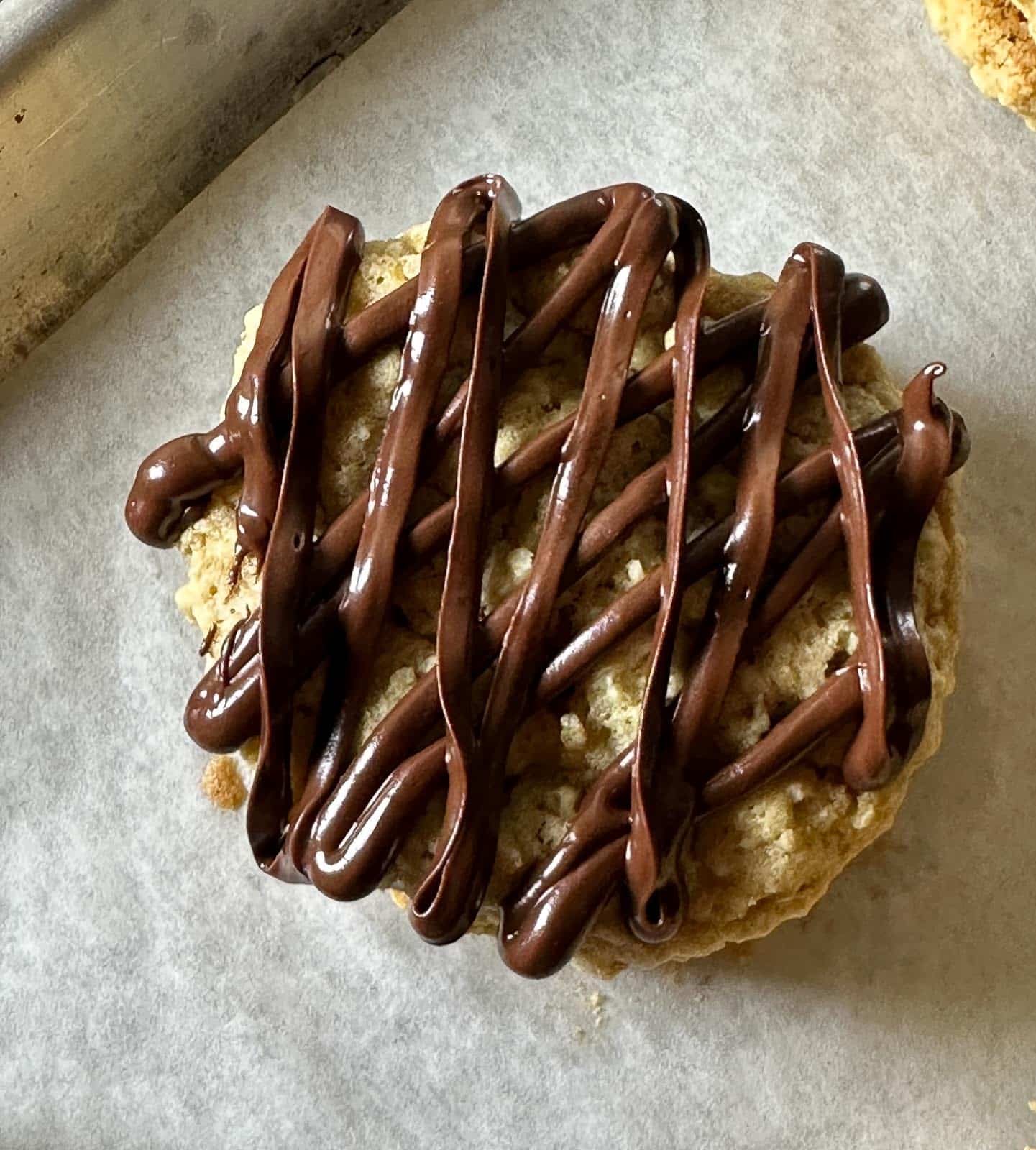

Low FODMAP Girl Scout Do-Si-Do Copycat Recipe
If you love Girl Scout Do-Si-Do oatmeal cookies with their luscious peanut butter filling, we have a treat for you. Our Low FODMAP Girl Scout Do-Si-Do Copycat Recipe is low FODMAP, gluten-free and lactose-free! Get ready to bite into two chewy oatmeal cookies sandwiched around a creamy peanut butter filling. And since I think chocolate and peanut butter go together so well, I drizzle half my batch with semisweet chocolate.
Low FODMAP Serving Size Info: Makes 14 sandwich cookies; 14 servings; 1 cookie per serving
Ingredients:
Oatmeal Cookies:
- 1/2 cup (1 stick; 113 g) unsalted butter, at room temperature
- 3/4 cup (160 g) firmly packed light brown sugar
- 1/4 cup (50 g) sugar
- 1 teaspoon vanilla extract
- 1 large egg, at room temperature
- 1 ¾ cups (173 g) old-fashioned rolled oats
- ¾ cup (109 g) low FODMAP gluten-free all-purpose flour, such as Bob’s Red Mill 1 to 1 Gluten Free Baking Flour
- 1/2 teaspoon baking powder; use gluten-free if following a gluten-free diet
- 1/2 teaspoon baking soda
- 1/4 teaspoon salt
Peanut Butter Filling & Topping:
- 1/2 cup (134 g + 2 tablespoons) smooth no-stir style peanut butter
- 2 tablespoons unsalted butter, at room temperature
- 1 cup (226 g) sifted confectioners’ sugar
- 1/2 teaspoon vanilla extract
- 1/8 teaspoon salt
- 3 to 4 tablespoons lactose-free milk or heavy cream; whatever you have on hand
- 4- ounces (115 g) semisweet chocolate, preferably 50% cacao, melted; optional
Preparation:
-
For the Cookies: Position racks in lower and upper third of oven. Preheat oven to 350° F (180°C). Line two half-sheet pans with parchment paper; set aside.
-
In the bowl of a stand mixer fitted with a paddle attachment, beat butter and sugars together until light and creamy. Beat in vanilla, then beat in the egg until well-combined. Next, on low speed, beat in the oats, flour, baking powder, baking soda, and salt just until mixture comes together.
-
Drop cookies by large tablespoonfuls onto prepared pans, spacing dough about 2-inches (5 cm) apart. Using a scoop will help make the cookies nice and round.
-
Bake cookies for about 10 to 12 minutes, rotating pans front to back, and upper to lower rack halfway through. Cookies should be firm and just beginning to turn golden around the edges, but still a tad soft in the center. Place pans on racks to cool cookies completely.
-
For the Filling & Assembly: In the bowl of a stand mixer fitted with a paddle attachment, beat peanut butter, butter, and confectioners’ sugar together until smooth and creamy. Beat in vanilla, then beat in enough milk or cream until the filling is spreadable, but thick enough to hold its shape. Spread filling on half of the cooled cookies and sandwich with the remaining cookies. If you want to drizzle chocolate on some of them, simply place melted chocolate in a parchment cone. Place sandwiched cookies on one of your pans and drizzle any chocolate pattern you like. You could also just dip a fork in the melted chocolate and wave it back and forth. If you drizzle with chocolate, chill briefly until chocolate is set.
-
Cookies can be stored in an airtight container at room temperature for up to 4 days, but we like them best within the first 24-hours.
Notes:
FODMAP Information
All recipes are based upon Monash University & FODMAP Friendly science at time of initial publication.
• Brown Sugar: Brown sugar has been lab tested by both Monash University and FODMAP Friendly. There are many kinds of brown sugar, from cane to beet (to blends) to Muscovado and more, which we discuss in our Explore An Ingredient: Sugar. Unfortunately, there is no information about what kind of brown sugars were lab tested. Monash gives us a low FODMAP amount of ¼ cup or 40 g but no further information. In addition, in private correspondence with Monash University we know that there are amounts larger than 40 g that would be considered low FODMAP. FODMAP Friendly gives us a low FODMAP amount of 13 g. Dark brown Muscovado sugar does appear in a product lab tested and certified low FODMAP by FODMAP Friendly, so we do know there is a low FODMAP amount.
• Butter: Both Monash University and FODMAP Friendly have lab tested butter. Monash states that a low FODMAP Green Light portion is 1 tablespoon or 19 g and also states that “butter is high in fat and does not contain carbohydrates (FODMAPs)”. FODMAP Friendly gives it a “Pass” at 1 tablespoon or 19 g. Both recommended serving sizes are presented as part of healthy eating guidelines, not as maximum FODMAP serving size. Fat can affect guy motility and trigger IBS symptoms in some people. Eat to your tolerance.
• Chocolate: Monash University has lab tested dark, milk and white chocolate all have low FODMAP amounts: 85% dark at 20 g; dark at 30 g; milk at 20 g; white at 25 g. FODMAP Friendly has also lab tested dark chocolate, milk and white chocolate. Their lab tests place low FODMAP servings for dark chocolate at 30 g, with a max low FODMAP serving size of 102 g (that contains dairy). Milk chocolate is 30 g with a 42 g max serve; white chocolate is also 30 g with a max low FODMAP serve of 42 g.
• Dairy: The low FODMAP diet is not a dairy-free diet. It is however, low in lactose. Many dairy ingredients are low in lactose, such as heavy cream and many cheeses.
• Eggs: Eggs are high in protein and do not contain carbohydrates, according to Monash University.
• Lactose-Free Dairy: Lactose-free dairy, such as lactose-free milk or lactose-free cream cheese, has lactase enzyme added that breaks the disaccharide molecules and creates a more digestible dairy product, from a lactose perspective. The resulting product is not dairy-free, but it is lactose-free. Some products might have miniscule amounts of lactose remaining, but the amount is small enough for the product to be labeled as lactose-free. For instance, Breyers Lactose-Free Vanilla Ice Cream states it is 99% lactose-free, while Lactaid Vanilla Ice Cream states it is 100% lactose-free.
• Oats: Both Monash and FODMAP Friendly have lab tested oats. FODMAP Friendly gave rolled oats a “Pass” at ½ cup or 43 g servings; in an update to the app they report Quick Oats as low FODMAP at 47 g, or ½ cup uncooked. Their max low FODMAP serving is 59.53 g. Monash has several app entries and some are country specific. Here we present their “basic” app entries which are not country specific (use your app to look up the other entries). For their main entry called “rolled oats” they say a Green Light low FODMAP serving is ½ cup, which they peg at 52 g. For “quick oats” they state that a low FODMAP serving is only ¼ cup at 23 g, becoming moderate Yellow Light at ½ cup or 47 g.
• Peanut Butter: Monash and FODMAP Friendly have both lab tested peanut butter. We do not have further information as to what kind of peanut butter was tested (unsweetened natural, made with hydrogenated oil and sugar, or no-stir style with palm oil and sugar). Monash shows two entries. We do not know what the images correspond to in terms of type of peanut butter. They state that both are low FODMAP at 2 Australian tablespoons, although one is said to be 50 g and the other 32 g. FODMAP Friendly’s app image shows what looks to be some sort of creamy style (not natural). They give it a “Pass” at 2 tablespoons (50 g), but also state a Max Serve at 6.86 ounces or 192.05 g. It is also important to note that Monash has said peanuts themselves have only trace amounts of FODMAPs and they say that peanut butter only becomes Moderate for fructose at 140 g. If you malabsorb fructose, it might be an issue; for others it might be tolerated very well.
• Sugar: Monash University and FODMAP Friendly have both lab tested white, granulated sugar. Monash states that a Green Light low FODMAP serving size of white sugar is ¼ cup (50 g). FODMAP Friendly simply states that they have tested 1 tablespoon and that it is low FODMAP. Regular granulated white sugar is sucrose, which is a disaccharide made up of equal parts glucose and fructose. Sucrose is broken down and absorbed efficiently in the small intestine. As the fructose is never in excess of the glucose, white sugar will never be high FODMAP, even in large amounts.
Please always refer to the Monash University & FODMAP Friendly smartphone apps for the most up-to-date lab tested information. Foods will be retested from time to time; in the case of raw ingredients, such as fruits and vegetables, results may vary. All lab tested results are valid and represent a snapshot in time. As always, your tolerance is what counts; please eat accordingly. The ultimate goal of the low FODMAP diet is to eat as broadly as possible, without triggering symptoms, for the healthiest microbiome.
Nutrition
All nutritional information is based on third-party calculations and should be considered estimates. Actual nutritional content will vary with brands used, measuring methods, portion sizes and more. For a more detailed explanation, please read our article Understanding The Nutrition Panel Within Our Recipes.
